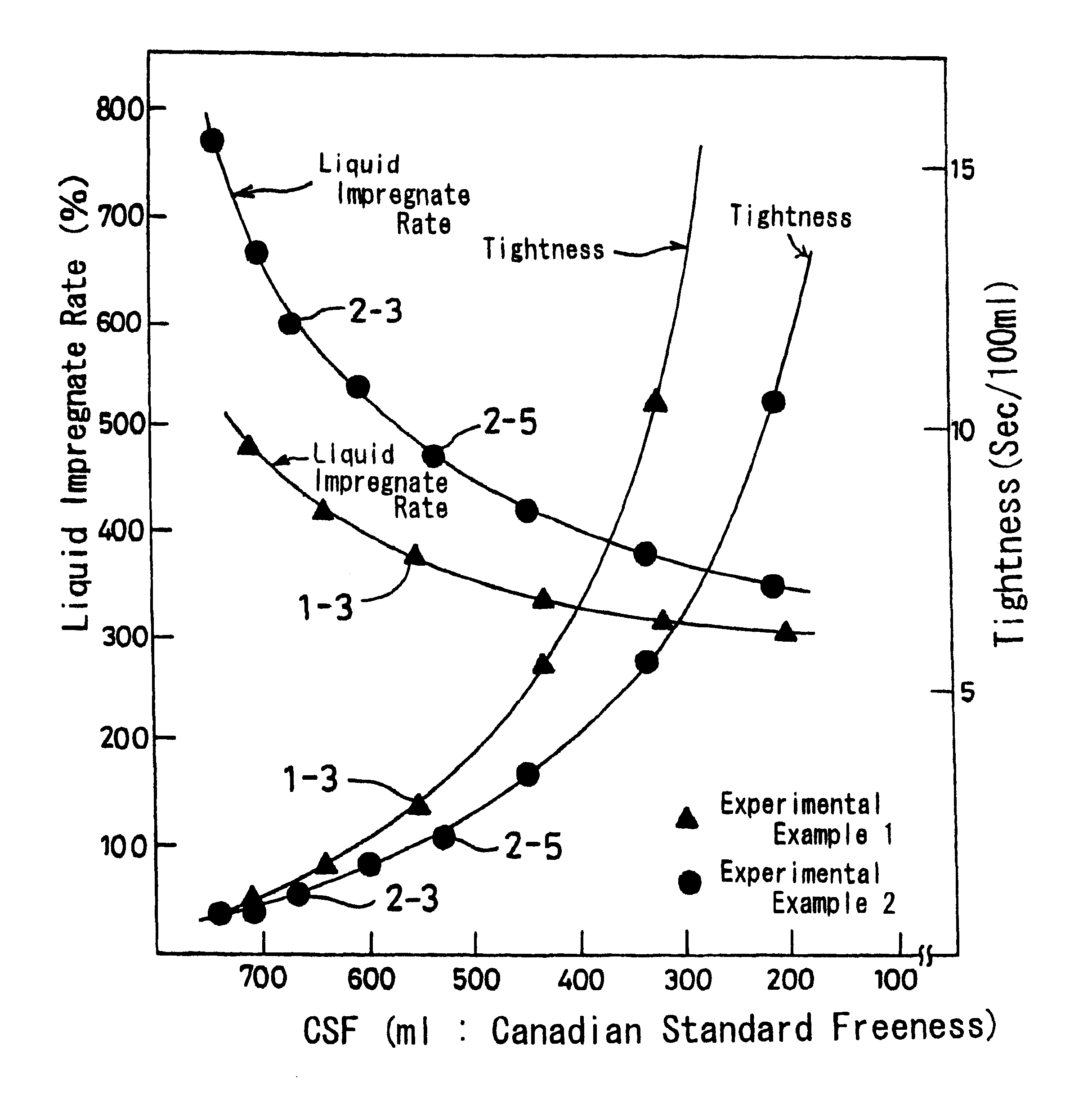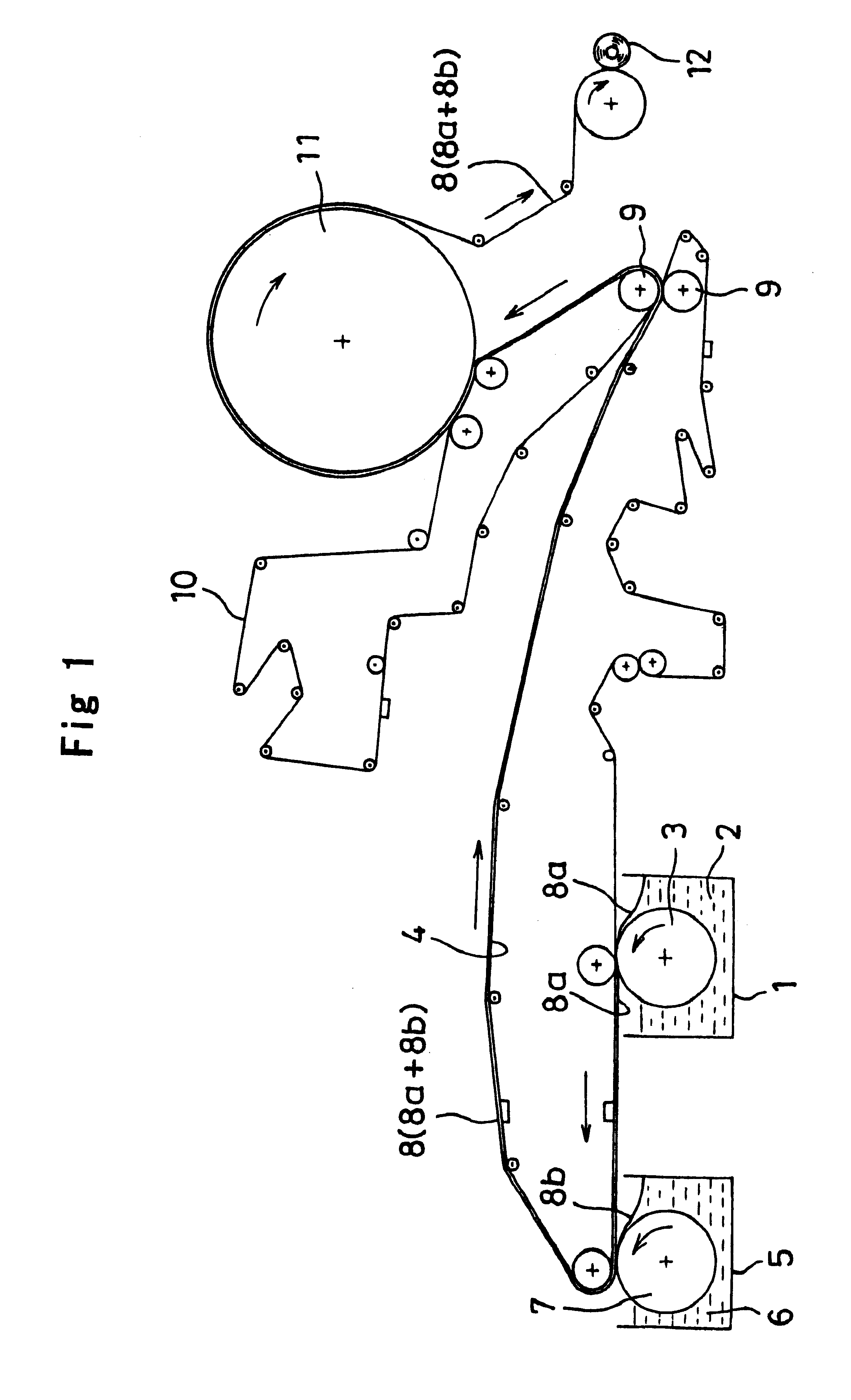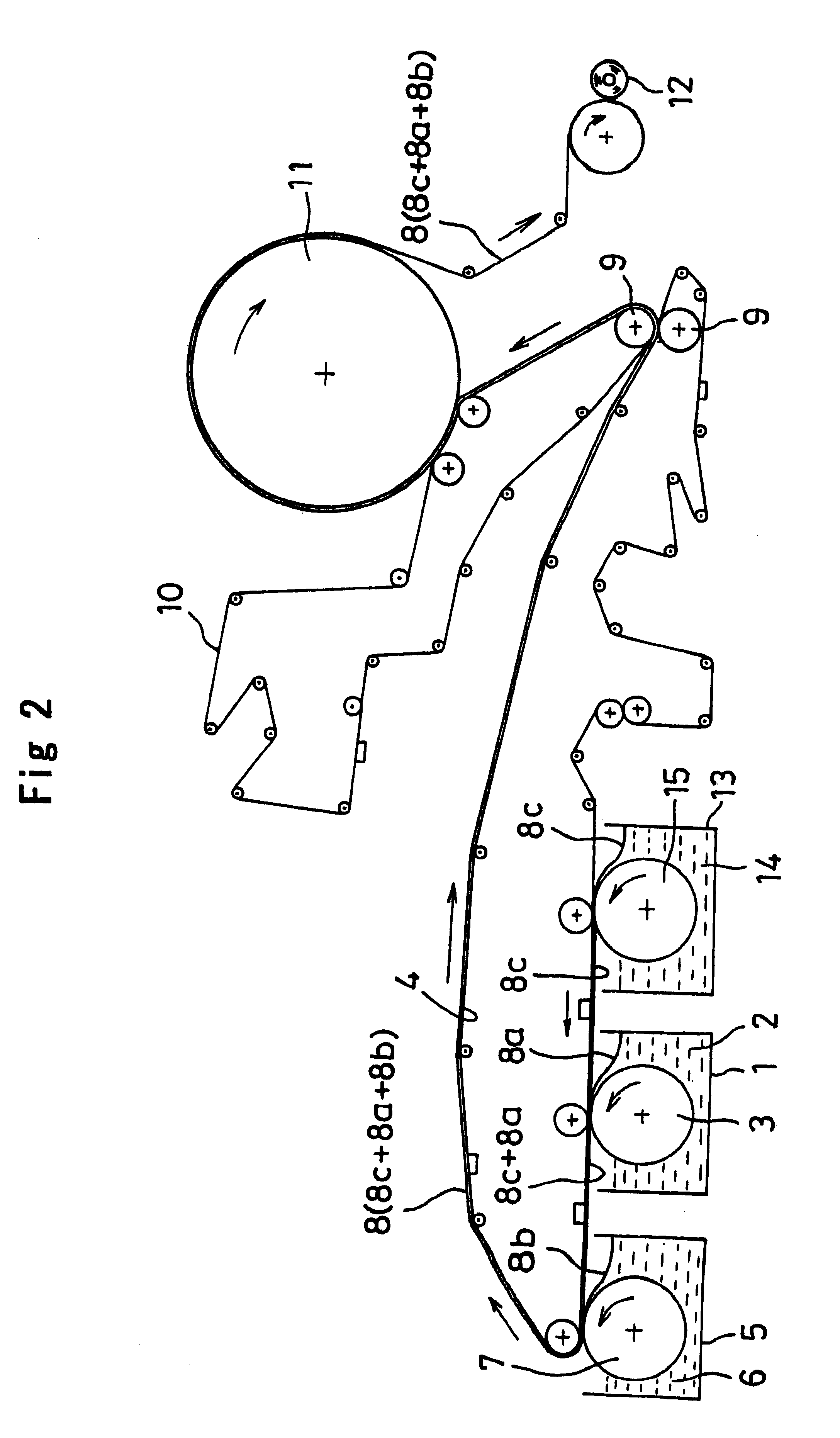Separator paper for alkaline-battery
a technology of separator paper and alkaline battery, which is applied in the field of separator paper, can solve the problems of reducing battery capacity, reducing the capacity of the battery, and insufficient hole diameter in regards to protecting internal shortages of the cell,
- Summary
- Abstract
- Description
- Claims
- Application Information
AI Technical Summary
Benefits of technology
Problems solved by technology
Method used
Image
Examples
first embodiment
Also, in the first embodiment shown in FIG. 1, the paper layer 8a of the dense layer of the separator paper is put in contact with the surface of the drier 11 and dried. Alternatively, the paper layer 8b of the liquid impregnate layer may be put in contact with the surface of the drier 11 and dried. However, it should be noted that, in making such a separator paper by laminating two layers, the airtightness and the liquid impregnate ratio may take on a different value respectively by either of the layers being put in contact with the surface of the drier. That is, by putting the dense layer in contact with the surface of the drier, a separator paper of higher airtightness may be attained, but by putting the liquid impregnate layer in contact with the surface of the drier, a lower airtightness may be attained than that of the dense layer, but increased liquid impregnate properties are given to the separator paper.
second embodiment
the paper making process according to the present invention by using the cylinder multi-layer paper machine for laminating liquid impregnate layers on both sides of the dense layer respectively to provide a three layered integrated paper is next shown in FIG. 2 in which a similar portion with that of the first embodiment shown in FIG. 1 is given the same number and a similar description which is not mentioned here. To attain three layered arrangements, in addition to the arrangement shown in FIG. 1, a furnish 14 for the liquid impregnate layer is contained in a cylinder vat 13 which is positioned upstream of the cylinder vat 1, in which the furnish 2 for the dense layer is contained, such that the cylinder vat 1 is located in mid-position of the vats. The furnish 14 contained in the cylinder vat 13 is filtered on the peripheral mesh of the cylinder mould 15 which is rotating inside of the vat 13, and a paper layer 8c of a continuous liquid impregnate layer is formed on the cylinder ...
third embodiment
the paper making process according to the present invention by using a cylinder-Fourdrinier combination machine for laminating a liquid impregnate layer on one side of the dense layer to provide an integrated paper is shown in FIG. 3, in which a similar portion, with that of the first embodiment shown in FIG. 1, is given the same number and a similar description which is not mentioned here. The third embodiment has a long mesh of the cylinder-Fourdrinier combination machine, with which the dense layer is made. As shown in FIG. 3, the furnish 17 for the dense layer contained in a long mesh inlet 16 is supplied onto the cylindrical surface of the long wire mesh 18 rotating under the long mesh inlet 16 to form a paper 8a of a continuous liquid impregnate layer on the cylindrical surface of the long wire mesh 18. The paper layer 8a thus formed is then transferred from the mesh onto the wet felt 4. The paper layer 8a carried on the wet felt 4 in similar manner as the first embodiment is ...
PUM
| Property | Measurement | Unit |
|---|---|---|
| lengths | aaaaa | aaaaa |
| load resistance | aaaaa | aaaaa |
| resistance | aaaaa | aaaaa |
Abstract
Description
Claims
Application Information
 Login to View More
Login to View More - R&D
- Intellectual Property
- Life Sciences
- Materials
- Tech Scout
- Unparalleled Data Quality
- Higher Quality Content
- 60% Fewer Hallucinations
Browse by: Latest US Patents, China's latest patents, Technical Efficacy Thesaurus, Application Domain, Technology Topic, Popular Technical Reports.
© 2025 PatSnap. All rights reserved.Legal|Privacy policy|Modern Slavery Act Transparency Statement|Sitemap|About US| Contact US: help@patsnap.com



